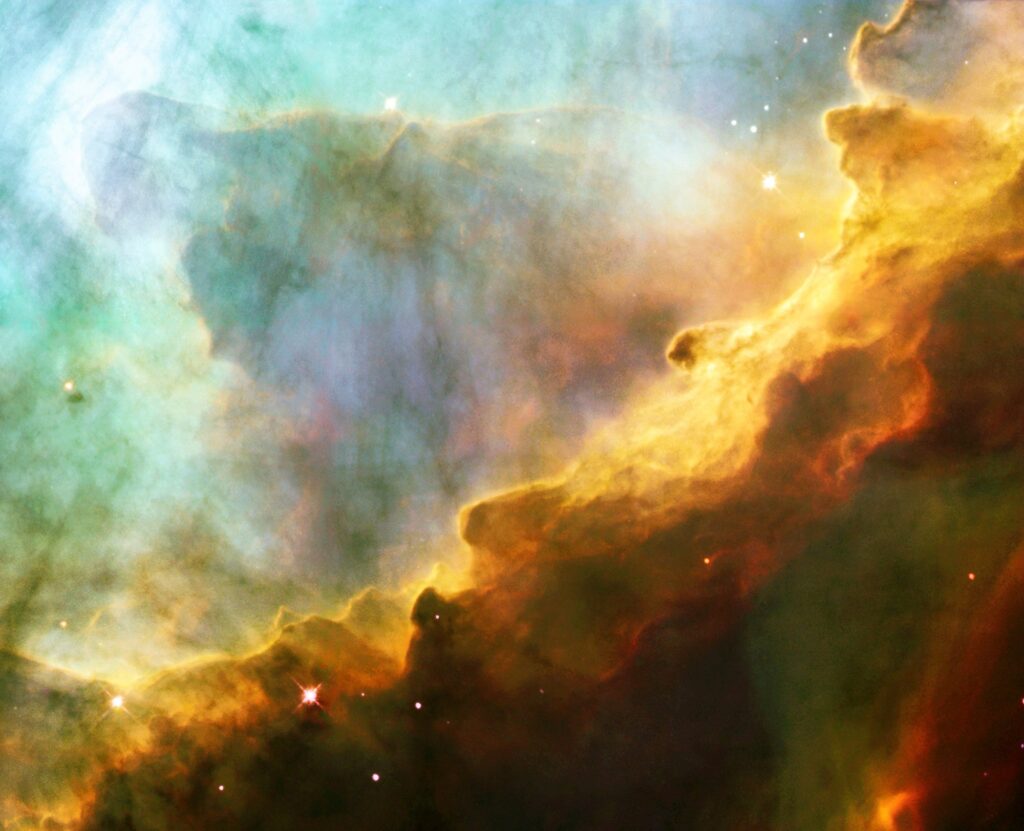
For years, scientists have been perplexed by a cosmic enigma: the apparent scarcity of sulfur in deep space. Despite being the tenth most abundant element in the universe and essential for both planetary and biological processes, sulfur seemed to be mysteriously absent in the vast reaches of space. A groundbreaking international study now offers a compelling explanation for this discrepancy, suggesting that sulfur has been hiding in plain sight.
Researchers from the University of Mississippi, the University of Hawaii at Mānoa, and Georgia State University have collaborated to uncover the mystery. Led by astrochemist Ryan Fortenberry, chemistry professor Ralf Kaiser, and computational chemist Samer Gozem, the team published their findings in Nature Communications. Their research reveals that sulfur’s elusive presence is due to its entrapment within icy grains of interstellar dust.
A Cosmic Hide-and-Seek
On Earth, sulfur is ubiquitous, emerging from volcanoes, coal power plants, and playing a crucial role in ocean chemistry. However, in the cold, dense regions of space where stars form, sulfur’s presence is significantly lower than expected. As Kaiser explained,
“The observed amount of sulfur in dense molecular clouds is less – compared to predicted gas-phase abundances – by three orders of magnitude.”
These cosmic dust and gas clouds, which contain many of the building blocks necessary for life, are surprisingly deficient in sulfur. One of the most common forms of sulfur, S8, forms a crown-like structure of eight sulfur atoms. The team’s results suggest that sulfur is not missing but is instead locked away in solid forms within interstellar ice. In these frigid environments, sulfur atoms can form octasulfur crowns and polysulfanes, structures that adhere to icy dust grains, effectively hiding the sulfur from view.
Why Sulfur’s Hard to Spot
Astronomers typically identify elements in space by detecting the unique patterns of light they emit or absorb. While advanced tools like the James Webb Space Telescope can easily identify elements such as oxygen, carbon, and nitrogen, sulfur presents a challenge. Fortenberry noted,
“When you do that for sulfur, it’s out of whack, and we don’t know why there isn’t enough molecular sulfur.”
The new research indicates that these solid sulfur compounds might be the hidden source, providing scientists with specific targets to search for in star-forming regions.
Another challenge is sulfur’s shape-shifting nature. As Fortenberry described,
“It never maintains the same shape. It’s kind of like a virus – as it moves, it changes.”
This instability complicates tracking sulfur, but the study’s findings highlight stable molecular forms that astronomers can now hunt for using advanced radio telescopes.
From Lab Simulations to the Stars
By recreating the conditions of deep space in laboratory experiments, the researchers confirmed that these sulfur compounds could form on icy surfaces. Once these icy grains are heated in young star systems, the sulfur can sublimate—transforming directly from a solid to a gas—making it detectable from Earth. This work could finally help astronomers piece together sulfur’s role in both the formation of planets and the chemistry that supports life.
Fortenberry expressed his enthusiasm for the field, stating,
“The thing that I love about astrochemistry is that it forces you to ask hard questions, then forces you to come up with creative solutions. And those hard questions and creative solutions can have significant, unintended positive consequences.”
Past Studies and Findings
Previous investigations into sulfur’s absence have shown that while the element is plentiful in the solar system and on Earth, its presence in dense interstellar clouds has been consistently lower than theoretical models predict. Earlier studies focused on sulfur’s gaseous forms, but space telescope observations failed to account for the missing quantities.
Laboratory work in the past suggested that sulfur might be incorporated into dust grains or transformed into less easily detectable compounds, but the exact nature of these forms remained unclear until recent efforts began to focus on complex sulfur-bearing molecules. Some earlier research also explored sulfur’s role in prebiotic chemistry, proposing that sulfur compounds may influence the chemistry of amino acids and other molecules related to life.
Practical Implications of the Research
If scientists can pinpoint exactly where sulfur is stored in interstellar space, it could deepen our understanding of how planets form and how essential life-building elements are distributed across the cosmos. This knowledge may also improve models of planetary atmospheres, especially for exoplanets where sulfur chemistry can influence habitability.
On a broader scale, the ability to detect hidden reservoirs of sulfur could refine our picture of the chemical evolution of galaxies and even provide insights into how life-supporting compounds travel from star-forming regions to young planets.
The discovery marks a significant step forward in astrochemistry, potentially unlocking new pathways for understanding the universe’s complex chemical tapestry.







